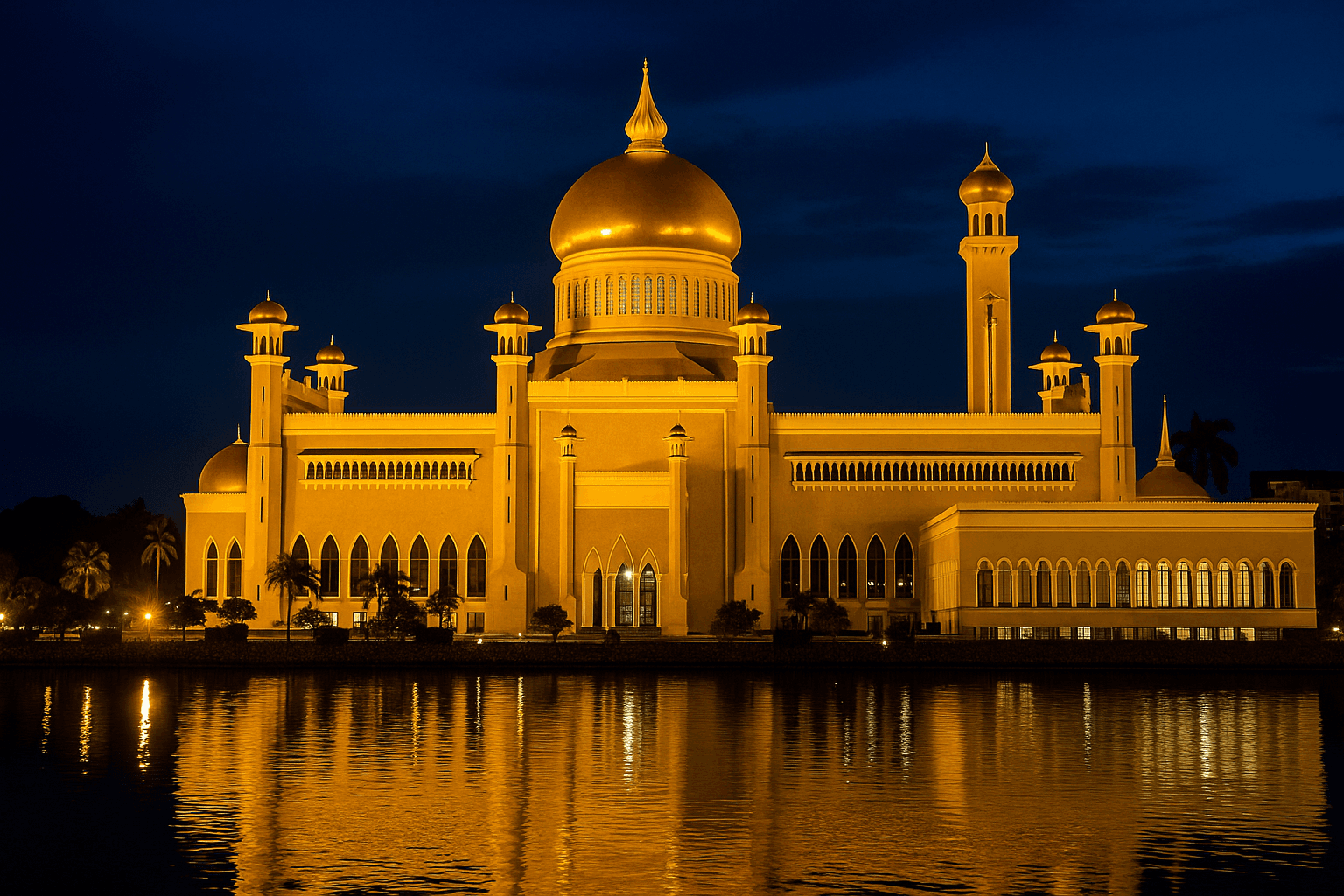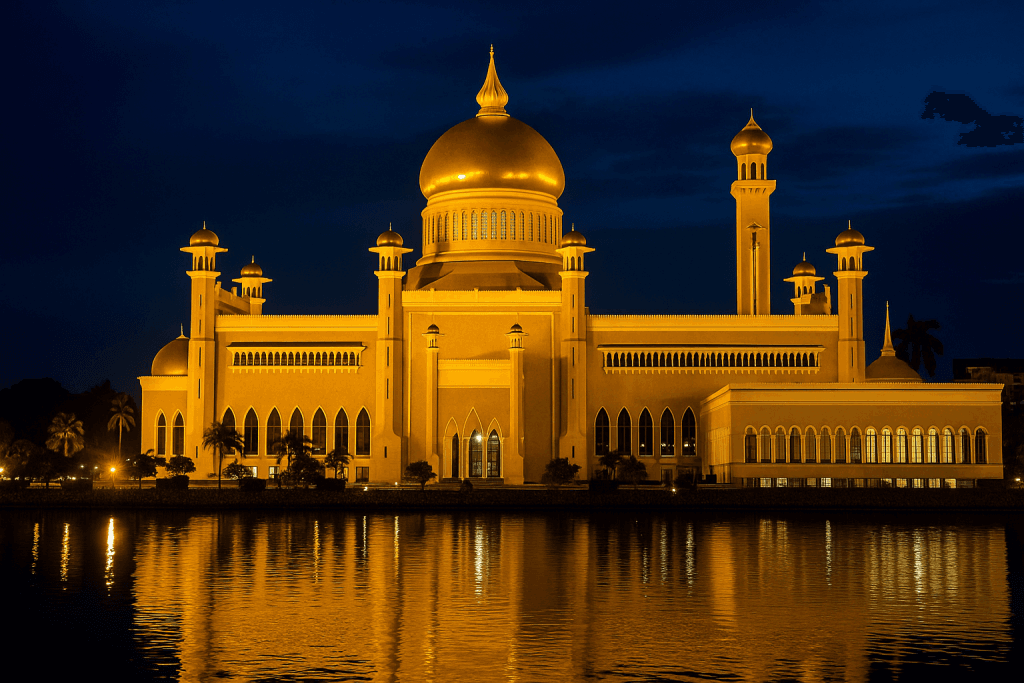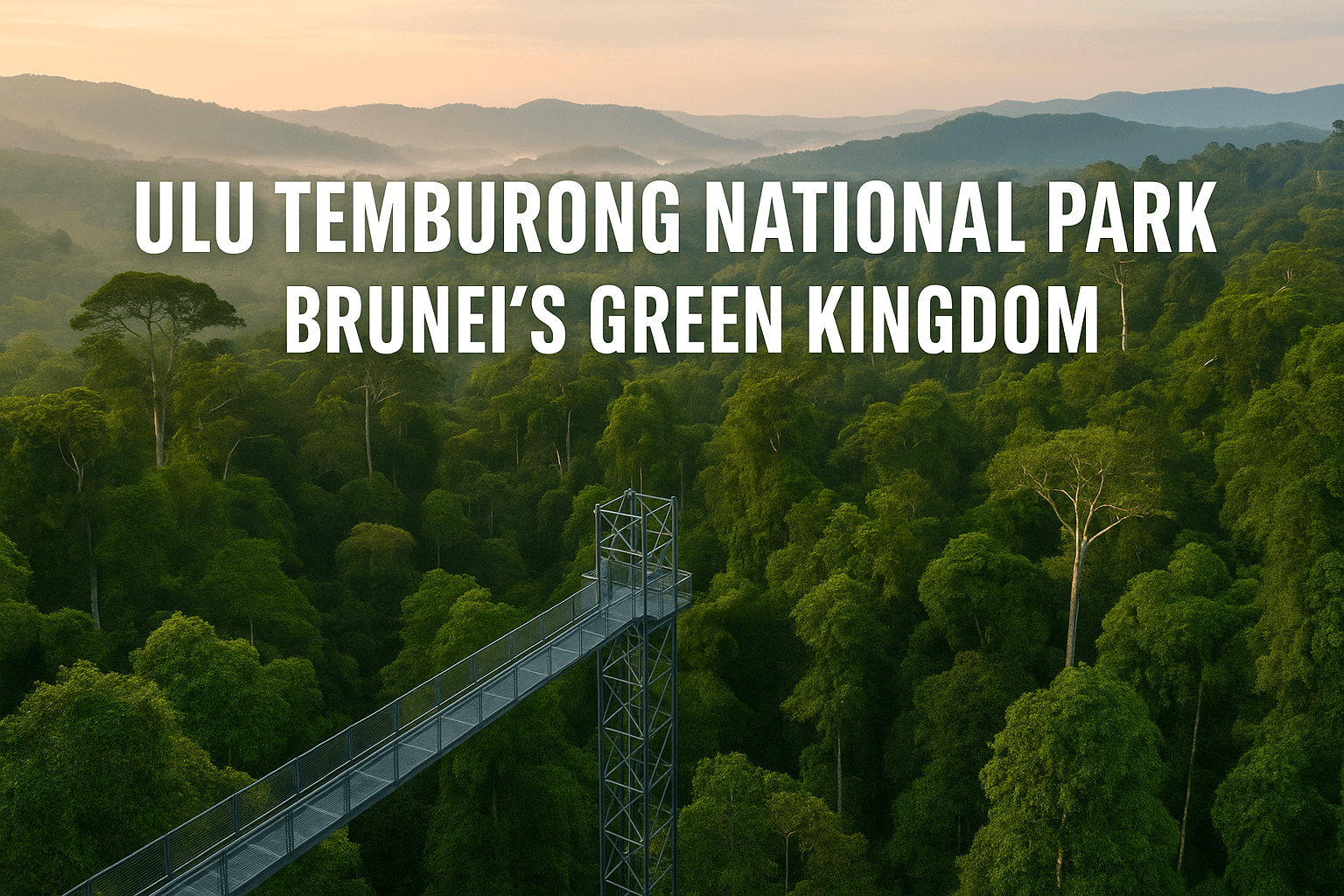Among the architectural marvels of the modern world, Istana Nurul Iman – The World’s Largest Royal Palace stands as a symbol of grandeur, tradition, and spiritual significance. Located in the heart of Brunei, this immense palace is more than just a royal residence; it is a fusion of cultural heritage, Islamic design, political authority, and national pride. Its scale, opulence, and symbolic importance place it firmly among the most iconic landmarks in Asia and the entire globe.
Spanning over 200,000 square meters, Istana Nurul Iman – The World’s Largest Royal Palace is not simply a house of royalty. It functions as a hub for Brunei’s monarchy, a space for ceremonial events, and a representation of the nation’s identity as a Malay Islamic Monarchy. Visitors and observers worldwide often marvel at its astonishing design, its lavish interior decorations, and its role as a cultural and spiritual beacon for Brunei Darussalam.

Historical Background
Origins of the Palace
The decision to construct Istana Nurul Iman – The World’s Largest Royal Palace came during a transformative period for Brunei in the late 20th century. As the nation sought to highlight its sovereignty, wealth, and cultural identity, the vision of a palace that would surpass any other in scale and magnificence took form.
Designed by Filipino architect Leandro V Locsin, renowned for his modernist yet culturally rooted projects, the palace was completed in 1984, coinciding with Brunei’s independence celebrations. Its name, which means “Palace of the Light of Faith,” emphasizes its deep connection to Islamic traditions and values.
Purpose of Construction
While many palaces in the world serve as private royal residences, Istana Nurul Iman – The World’s Largest Royal Palace was built with a broader purpose. It became the seat of government functions, official ceremonies, and grand Islamic celebrations. It showcases Brunei’s immense oil wealth, but more importantly, it represents a statement of cultural pride, monarchy authority, and faith.
Architectural Grandeur
Exterior Features
The exterior of Istana Nurul Iman – The World’s Largest Royal Palace is instantly recognizable with its golden domes, sweeping arches, and Islamic motifs. The fusion of traditional Malay elements with modern construction techniques creates a unique aesthetic that blends faith and modernity.
The palace is positioned along the banks of the Brunei River, offering an enchanting view from the water. Its whitewashed façade, accented with golden domes, symbolizes purity and divine light, aligning with its name and significance.
Interior Majesty
Inside, Istana Nurul Iman – The World’s Largest Royal Palace contains over 1,700 rooms, including banquet halls, conference spaces, residential quarters, and offices. The grand hall, capable of hosting thousands of guests, is often used for state banquets, royal receptions, and the annual open house celebrations during Hari Raya Aidilfitri.
Lavish chandeliers, marble pillars, gilded decorations, and plush carpets demonstrate the palace’s grandeur. Yet, the design remains rooted in Islamic aesthetics, with geometric patterns, calligraphy, and motifs symbolizing harmony, balance, and spirituality.
Cultural and Religious Symbolism
A Palace of Faith
The very name Istana Nurul Iman – The World’s Largest Royal Palace reflects Islam’s central role in Bruneian life. The palace houses a mosque that can accommodate over 1,500 worshippers, making it a space where royal, cultural, and spiritual dimensions intertwine.
A Living Symbol of Monarchy
Brunei is one of the few remaining absolute monarchies in the world, and the palace serves as the physical embodiment of royal power and continuity. It is where the Sultan of Brunei resides, governs, and receives dignitaries from across the globe.
Political and Diplomatic Importance
State Functions
Istana Nurul Iman – The World’s Largest Royal Palace is not only a private residence but also a working palace. It hosts government meetings, national ceremonies, and international summits. This dual role makes it unique compared to many royal palaces that are either ceremonial or residential in function.
Diplomatic Symbol
For foreign leaders and dignitaries, being received at Istana Nurul Iman – The World’s Largest Royal Palace is a mark of honor and recognition. The palace provides a stage where Brunei showcases its traditions, values, and hospitality to the international community.
Festivals and Celebrations
Hari Raya Aidilfitri
One of the most significant traditions associated with Istana Nurul Iman – The World’s Largest Royal Palace is the annual open house during Hari Raya Aidilfitri. During this celebration, Brunei’s citizens have the rare opportunity to enter the palace grounds, greet the Sultan, and share in the festive atmosphere.
This tradition not only strengthens the bond between the monarchy and its people but also emphasizes the Islamic value of generosity and community.
Comparisons to Other Palaces
When compared to Buckingham Palace in the United Kingdom, the Palace of Versailles in France, or the Forbidden City in China, Istana Nurul Iman – The World’s Largest Royal Palace surpasses them all in sheer scale and opulence. Its size, combined with its active use as both residence and governmental hub, makes it unparalleled in the modern world.
Tourism and Global Fascination
Although it is not open to tourists year-round, Istana Nurul Iman – The World’s Largest Royal Palace remains one of Brunei’s most visited landmarks. Tourists often marvel at its riverside views, its grand scale, and its symbolic role in Brunei’s identity. Travel literature, documentaries, and architectural studies frequently cite it as one of the most impressive palaces ever built.
Istana Nurul Iman in the Context of Brunei’s Identity
The palace reflects Brunei’s three guiding national principles: Malay culture, Islamic faith, and Monarchy (Melayu Islam Beraja). Each aspect of the palace, from its name to its design, symbolizes these pillars. As such, it is not merely a royal residence but the living heart of Brunei’s identity.
Legacy and Enduring Importance
As the decades pass, Istana Nurul Iman – The World’s Largest Royal Palace continues to represent Brunei’s sovereignty, wealth, and traditions. Its grandeur may impress visitors, but its deeper meaning lies in its role as a palace of faith, monarchy, and national unity.
Future generations will continue to look at this architectural marvel not only as a display of wealth but also as a cultural treasure and a symbol of Brunei’s enduring values.
Conclusion
Istana Nurul Iman – The World’s Largest Royal Palace is far more than the largest palace in the world. It is a living monument to Brunei’s heritage, monarchy, and faith. From its architectural brilliance and lavish interiors to its symbolic and spiritual significance, it represents the essence of Brunei Darussalam.
As travelers, scholars, and observers reflect on the palace’s role, it remains clear that Istana Nurul Iman – The World’s Largest Royal Palace is not simply a building—it is the embodiment of a nation’s pride, faith, and identity.


